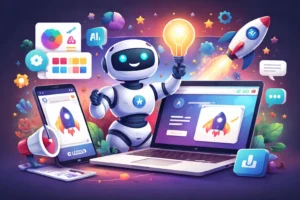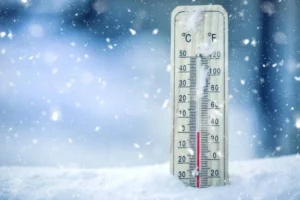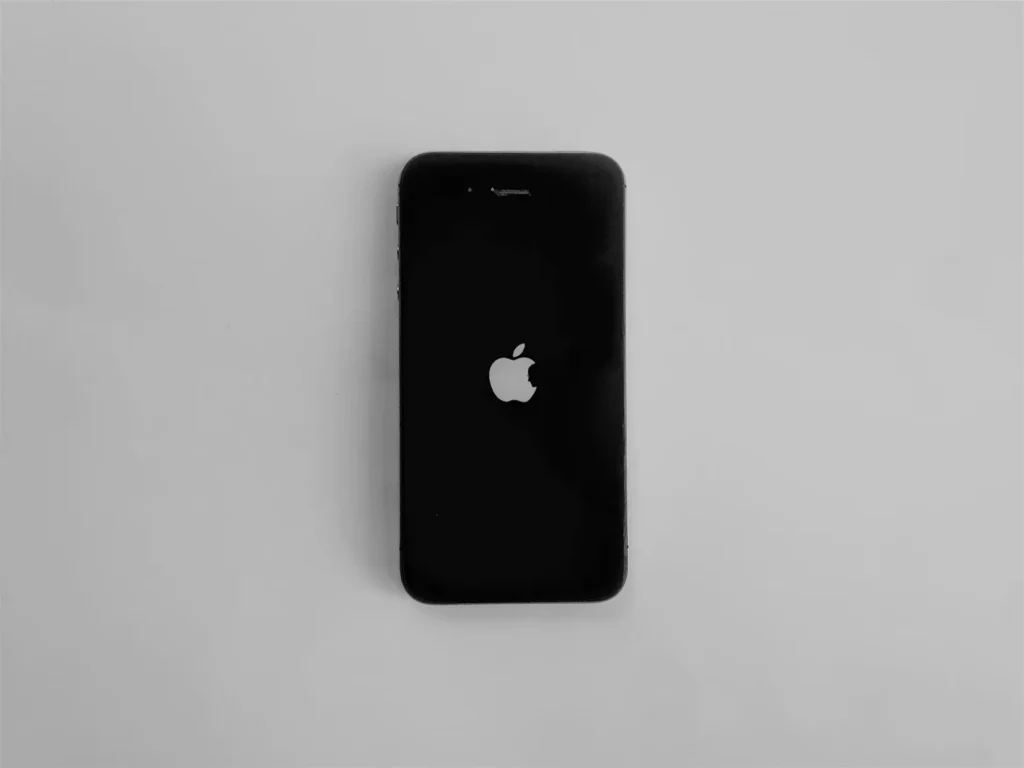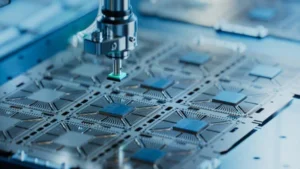Disclaimer: This article is for informational purposes only. Always consult Apple Support or a certified technician for device issues. Use third-party apps at your own discretion.
When you update your iPhone to the newest iOS, you expect better speed and cool new features, not to have your phone slow down, right? Yet many users have reported that their iPhones slow down after updates, even with the latest version of iOS 18. And let’s be real, that’s a problem, mainly when iPhone is your de facto device for everything from calls to work. That’s why in this article, we will cover how to fix a laggy iPhone after an iOS update.
What Happened? Why is iPhone Lagging After an Update?
If your device freezes or seems slower after updating to the latest iOS, don’t panic. It can simply be part of the process and does not necessarily indicate anything critically wrong or that it’s time to buy a new phone. After an update, it runs a bunch of background processes, like indexing files, photos, emails, and more. That puts extra strain on the system for a bit, which can cause things to lag for a few hours or even a couple of days. So, it’s worth just waiting it out; the slowdown might clear up on its own.
Also, keep in mind that early versions of iOS updates can come with bugs or glitches that mess with performance. Apple usually rolls out quick fixes in follow-up updates. That’s why a lot of people recommend waiting a week or two before installing a new iOS so you get the more stable, optimized version.
If neither of those situations applies to you, there’s a chance that iPhone just isn’t fully compatible with the new iOS version. Older models can struggle with the latest features or visual effects, which can slow things down. In that case, it’s worth evaluating the condition of the iPhone, and if it’s a bit older, you should skip future updates. But if you have already updated and are facing the slowdown now, we have good news for you. There are still a few things you can do to minimize the impact.
How to Stop iPhone from Lagging After iOS Update
It is essentially a mini-computer that’s made up of many components that need to work together. They are running in parallel, so if one of them fails, it can affect the whole system. That’s why we recommend going through the fixes below carefully. Identify which of these apply to iPhone’s specific issues, and try those first. Then, work through the rest to get the iPhone running smoothly again.
Fix 1: Restart Your iPhone
You’ve probably heard the classic joke: if your computer has problems, restart it, and boom, problem solved. Well, that applies here, too. If your device starts lagging after an update, sometimes the most straightforward fix is to restart it. A quick reboot can clear temporary memory, stop stuck processes, and improve performance.
- Tap on the ‘Settings’ app on your gadget’s home screen.
- Scroll down and select ‘General’ from the list of options.
- At the bottom of the ‘General’ settings page, you will find ‘Shut Down’. Tap on it.
- A slider will appear at the top of the screen with the instruction ‘Slide to Power Off’. Drag this slider to the right to turn off your phone.
- After the screen turns completely black, indicating that the iPhone is off, press and hold the side button (on the right side) until the Apple logo appears.
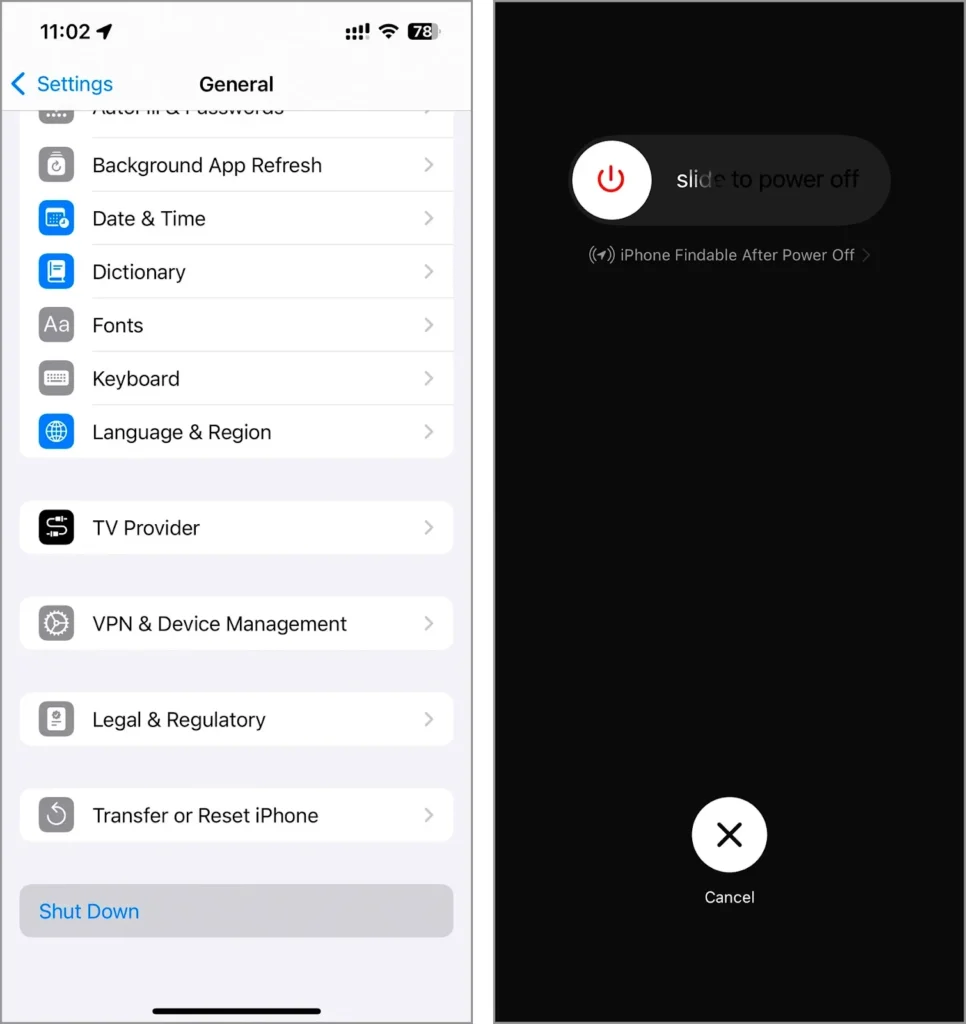
Fix 2: Update All Apps That Need It
If you notice that your iPhone is laggy after an iOS update, especially when using apps like messengers or games, it could be due to outdated apps. Some apps might not be fully optimized for the latest iOS version yet, which can cause your phone to slow down. The good news? This one’s an easy fix.
- Open the App Store from the iPhone’s home screen.
- Tap your profile icon in the top right corner to go to your account page.
- Scroll down to the Available Updates section, and you’ll see a list of apps that have updates ready.
- Tap Update All to install everything at once, or hit Update next to individual apps if you’d rather update them one at a time.
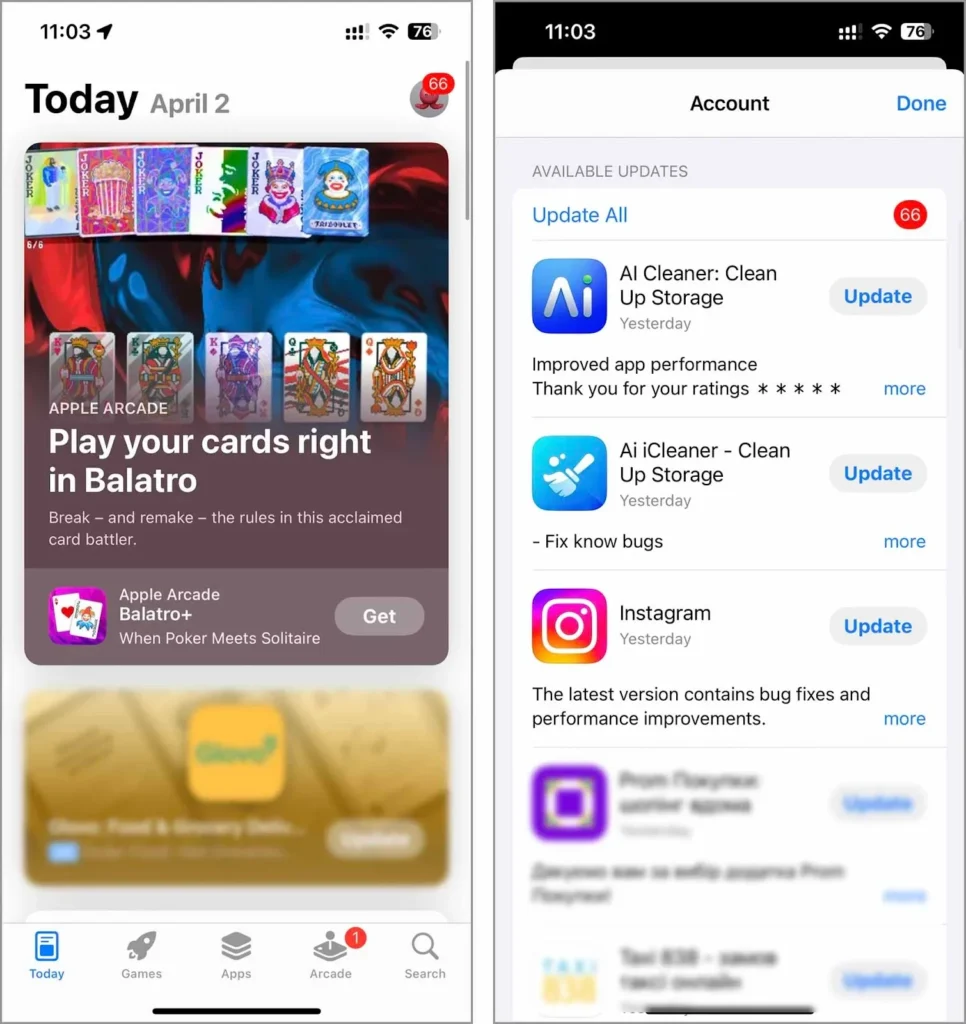
Fix 3: Reduce the Load on the iPhone Processor
If you’ve been using iOS for a while, you’ve probably noticed that newer updates often include many visual effects to make the interface look more sleek and interactive. But here’s the thing: those effects can slow down the device, especially on older iPhones. You can turn them off to reduce the load on your processor, which might help fix sluggish performance.
- Tap the ‘Settings’ app on the iPhone’s home screen.
- Scroll down and select ‘Accessibility’ from the list of options.
- Find and tap on ‘Motion’ within the Accessibility settings.
- Toggle the ‘Reduce Motion’ switch to the ON position. This action will reduce the motion of the user interface, including the parallax effect of icons and effects in the Weather app, Messages, and multitasking.
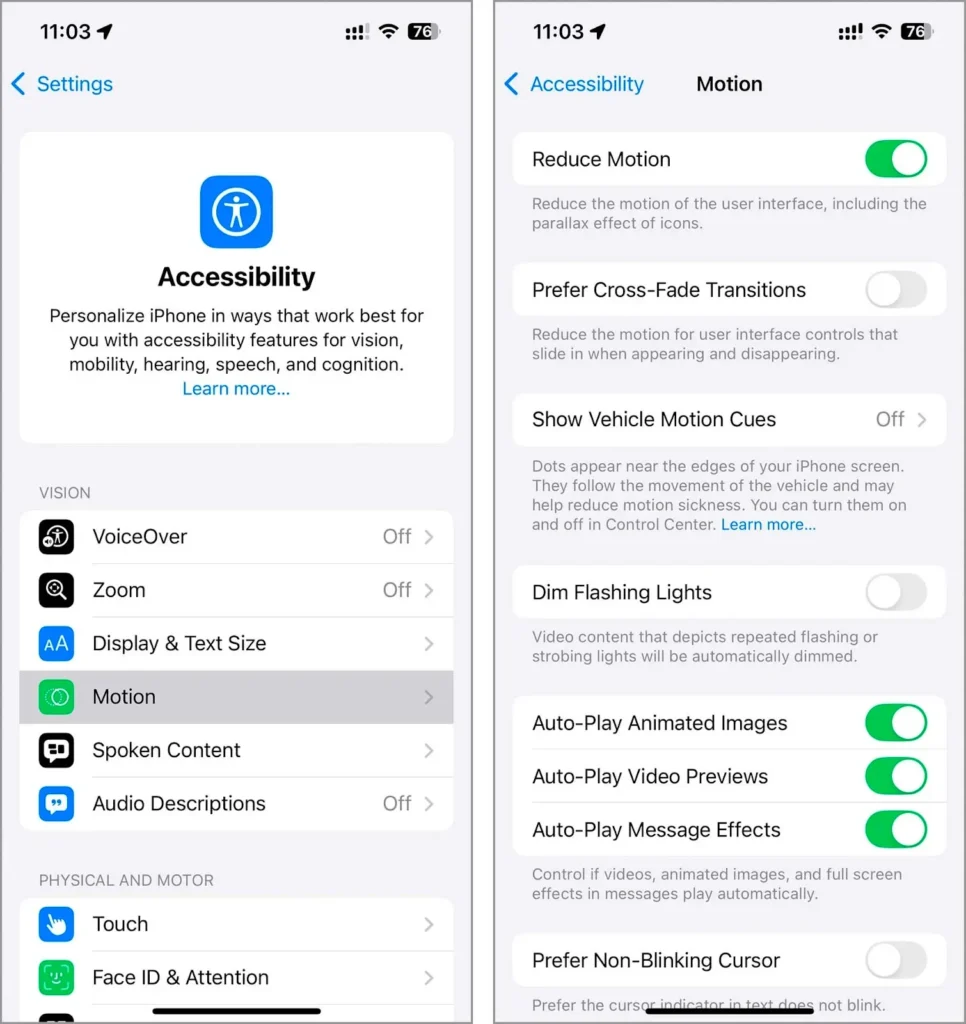
Besides motion effects, widgets on your home screen can also slow down your gadget. This applies to both the built-in ones and those from third-party apps. If your phone’s feeling sluggish, try removing some widgets to boost performance. Once everything’s running smoothly again, you can always add them back later.
- From the home screen, touch and hold the widget you wish to remove.
- When the quick actions menu appears, tap ‘Remove Widget.’
- Tap ‘Remove’ to confirm that you want to delete the widget from your home screen.
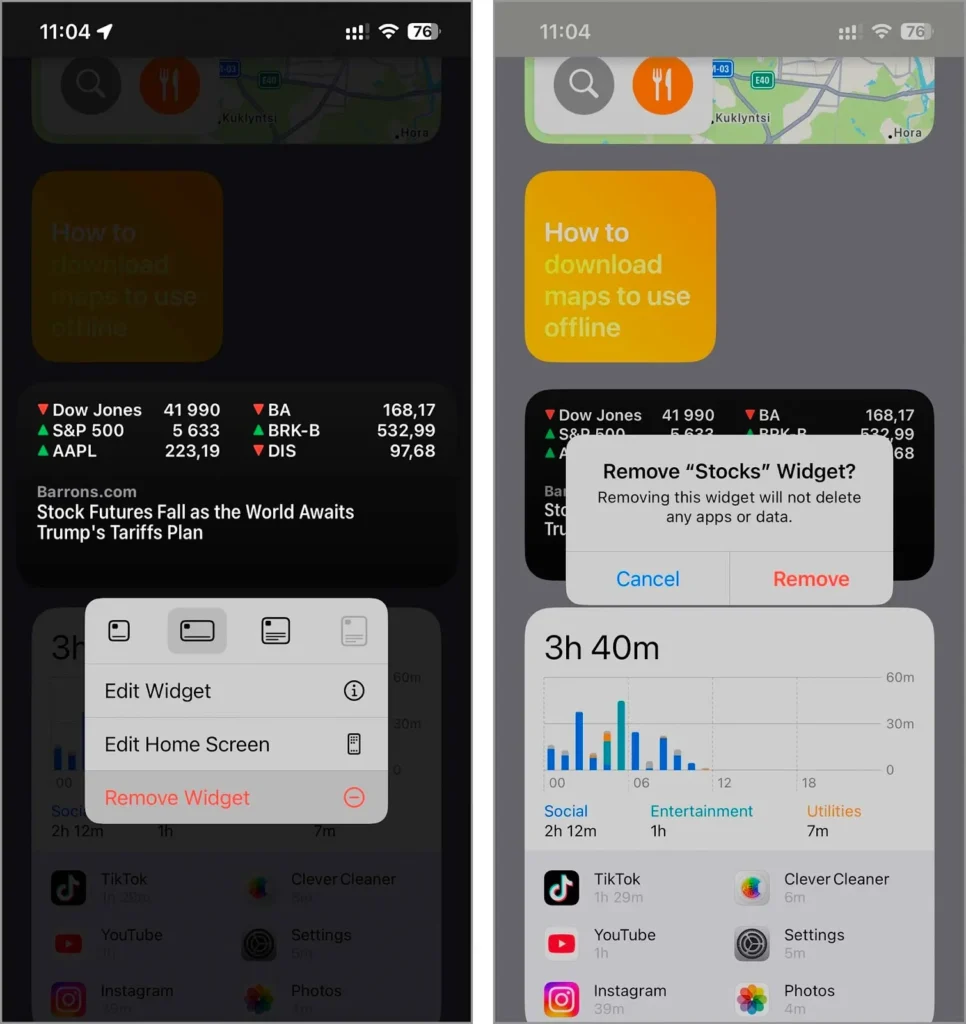
To add widgets back, go to the home screen where you want them, then press and hold an empty spot until the apps start to jiggle. Tap the Edit button in the top-left corner > hit Add Widget > pick the one you want, choose a size, and tap Add Widget again. When you’re done, just tap Done to lock it in.
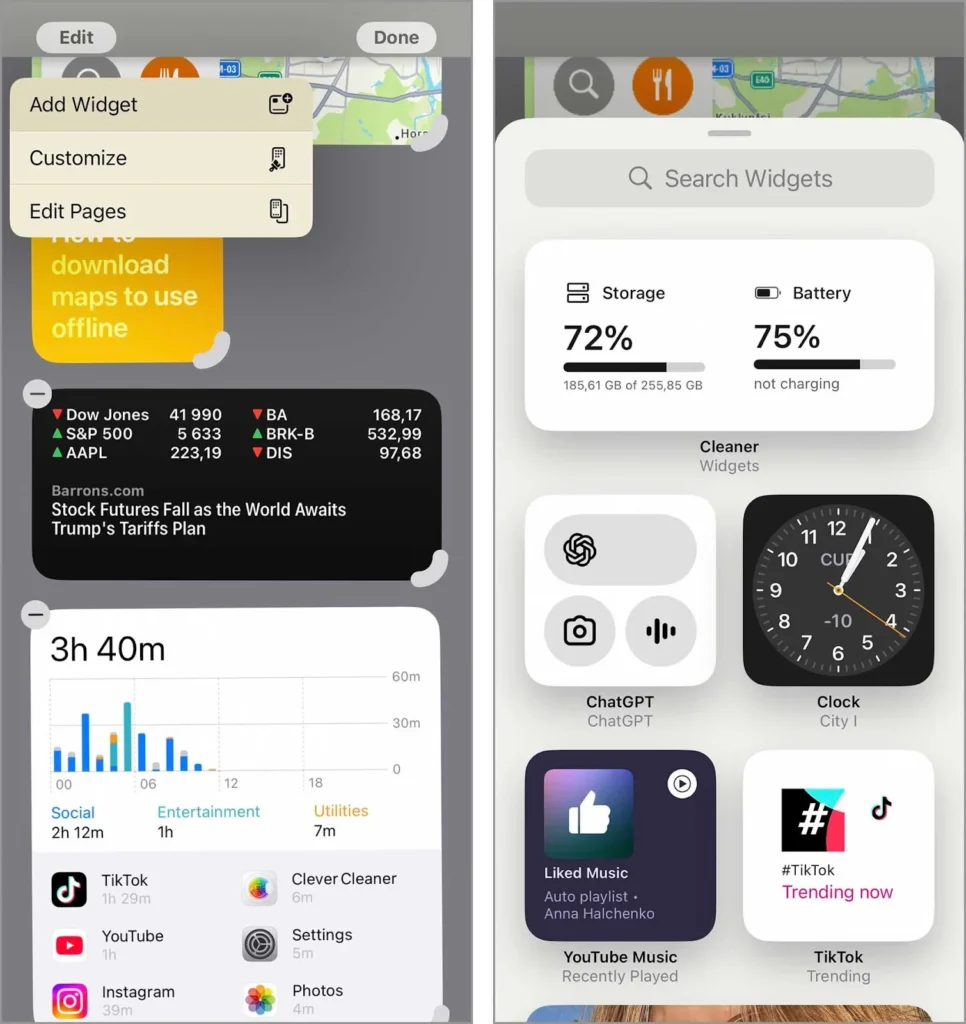
Fix 4: Check Your iPhone Battery
Now, we move on to the more significant issues that might be causing the iPhone to slow down after an update. You’re probably aware that your gadget’s battery doesn’t last forever; it gradually loses capacity over time. Once it dips below 80%, Apple advises replacing it.
Recent user feedback suggests that iOS 18.4 triggered a noticeable drop in battery health. Some saw their battery percentage drop from 87% to 79%. If the iPhone suddenly feels sluggish, you might be experiencing a similar issue.
- Open the Settings app on your Apple phone.
- Scroll down and tap Battery.
- Next, tap Battery Health & Charging and check the Maximum Capacity percentage. If it’s below 80%, that’s a clear sign that your battery is worn out and probably needs to be replaced.
- Right below the maximum capacity reading, you’ll see a message if performance management has been turned on to prevent unexpected shutdowns. If that feature is active, it means your battery health is low enough that it’s actually slowing down iPhone’s performance.
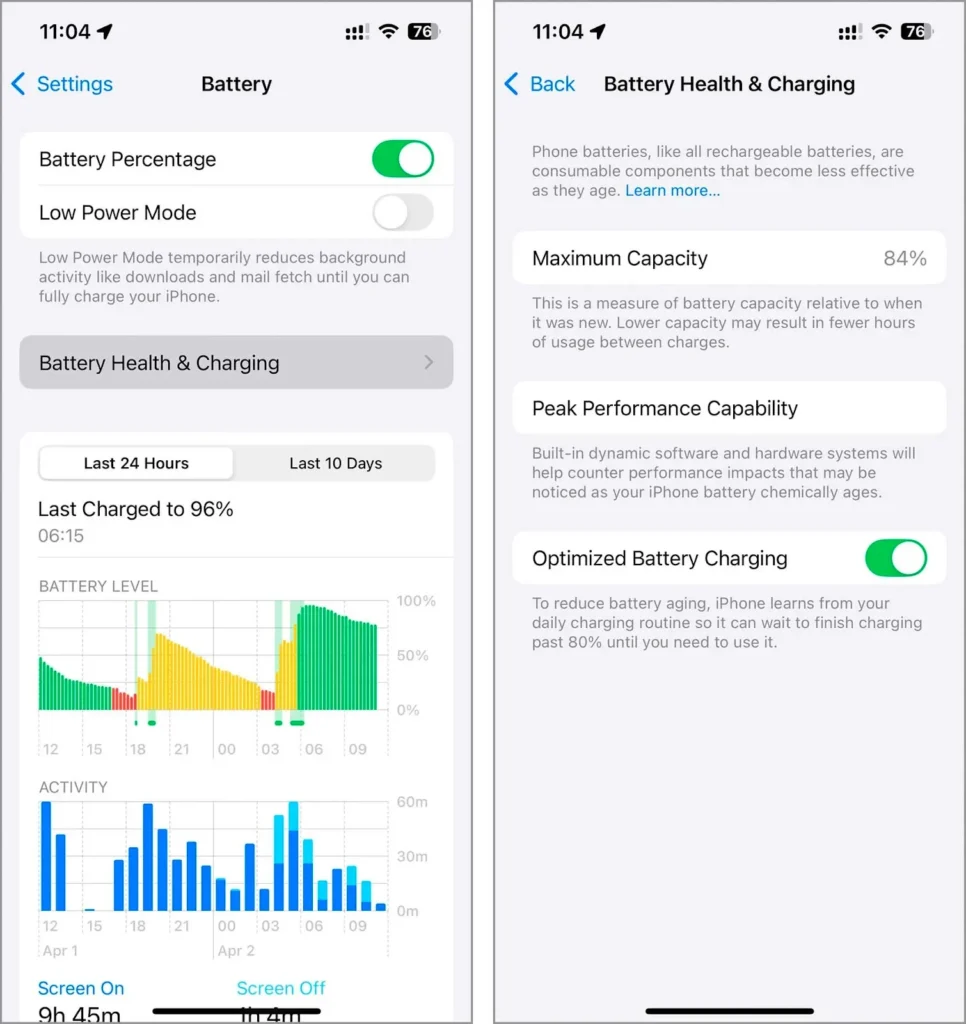
Fix 5: Clear Your iPhone Storage
In addition to impacting the battery, an iOS update can also affect the iPhone’s storage. Update files can be several gigabytes, and if your storage is already close to full, the update can push it over the edge. That can leave the iPhone struggling to perform basic tasks, which slows everything down.
There are plenty of ways to free up space, but we’ll stick to the two quickest fixes: clearing out photos and videos, and deleting apps you don’t use. These two categories usually occupy the most space and can make a big difference quickly.
Instead of manually sorting through your photo and video library to decide what to delete, it’s way easier to use a cleaner app that can do the work for you. For this article, we went with Clever Cleaner: AI CleanUp App.
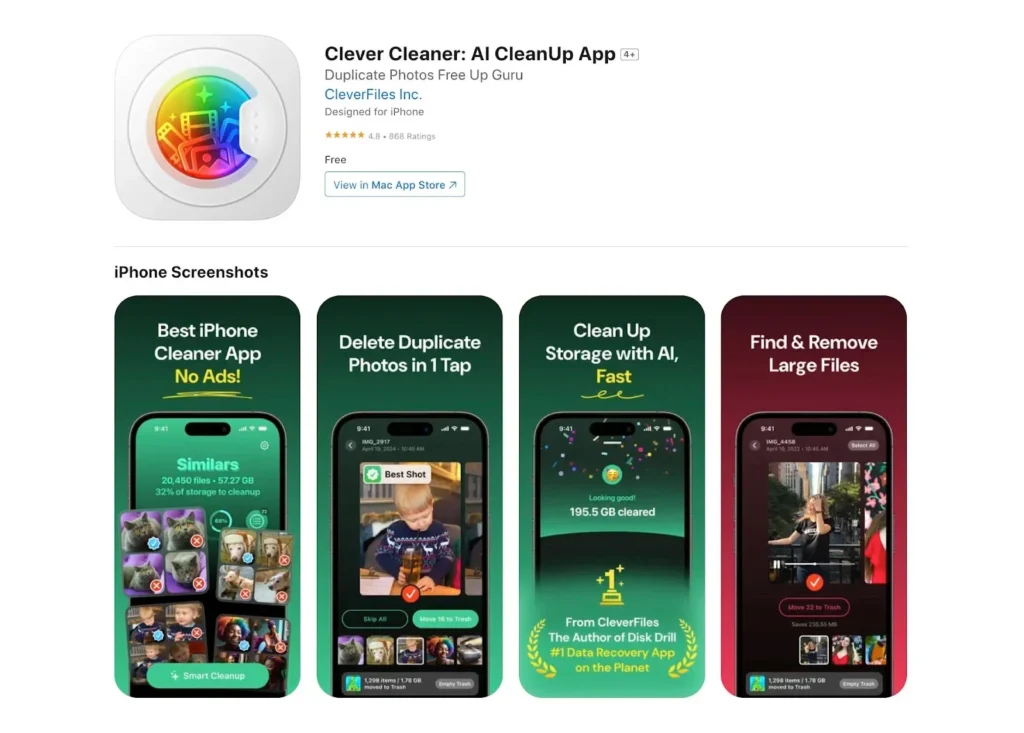
It’s completely free, often featured in roundups of the best-looking iPhone cleaner apps, and its high App Store rating speaks for itself. The app has several handy features for cleaning up your Photos app, but the one we highlighted here is called Heavies. It shows you the largest files in your gallery, photos and videos over 25MB, and lets you delete them fast.
- Find and download Clever Cleaner for iPhone from the App Store.
- Open the app and permit it to access your library.
- Tap on the ‘Heavies’ option at the bottom of the screen to open the feature for large files.
- The app will display your photos and videos larger than 25MB, sorted from largest to smallest, with details like file size and duration. Tap on any file to enter the selection screen. To delete multiple items, tap ‘Select All’ at the top of the screen. Alternatively, mark the items you want to delete yourself.
- Press ‘Move to Trash’ to delete the marked items.
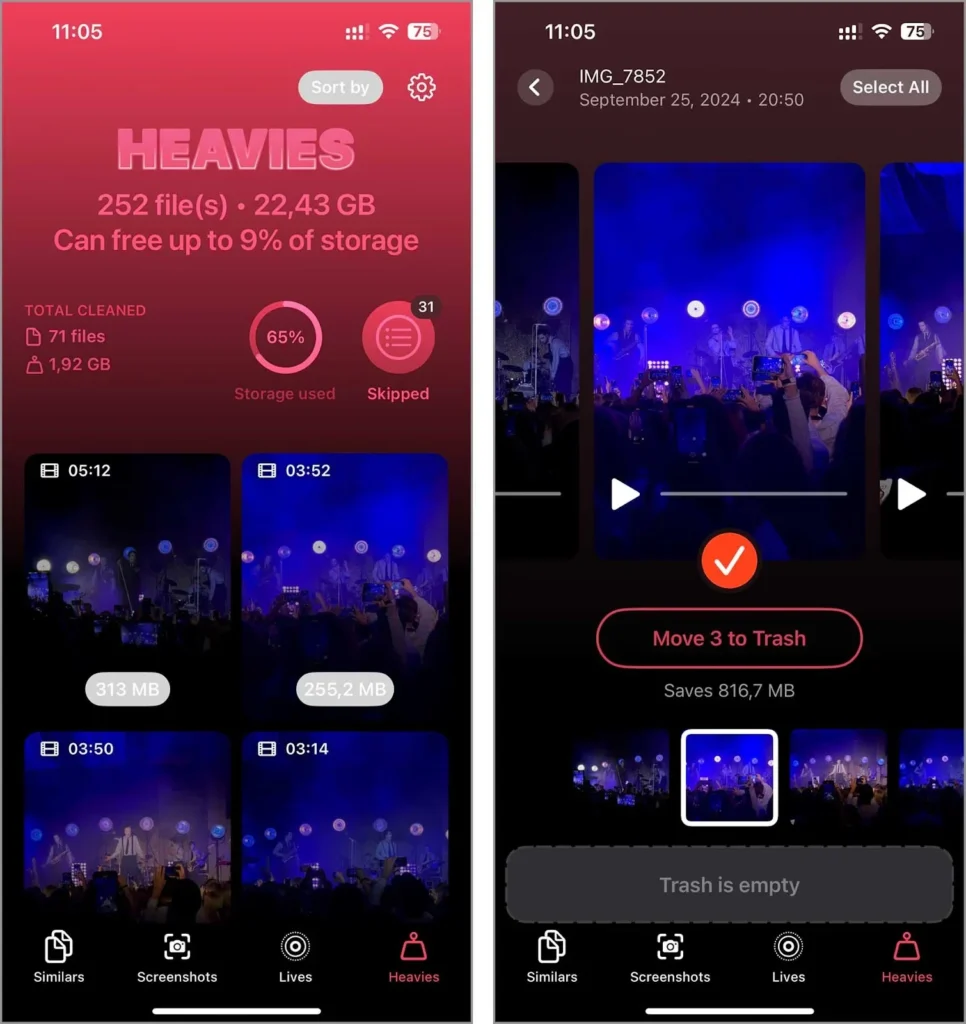
- Tap the ‘Empty Trash’ button. This action opens the app’s trash can, where you can review and, if necessary, restore wrongly marked files.
- Confirm the deletion, and the app will move the selected videos to the ‘Recently Deleted’ album in your Photos app. You can permanently delete them from there to free up space immediately, which we recommend doing.
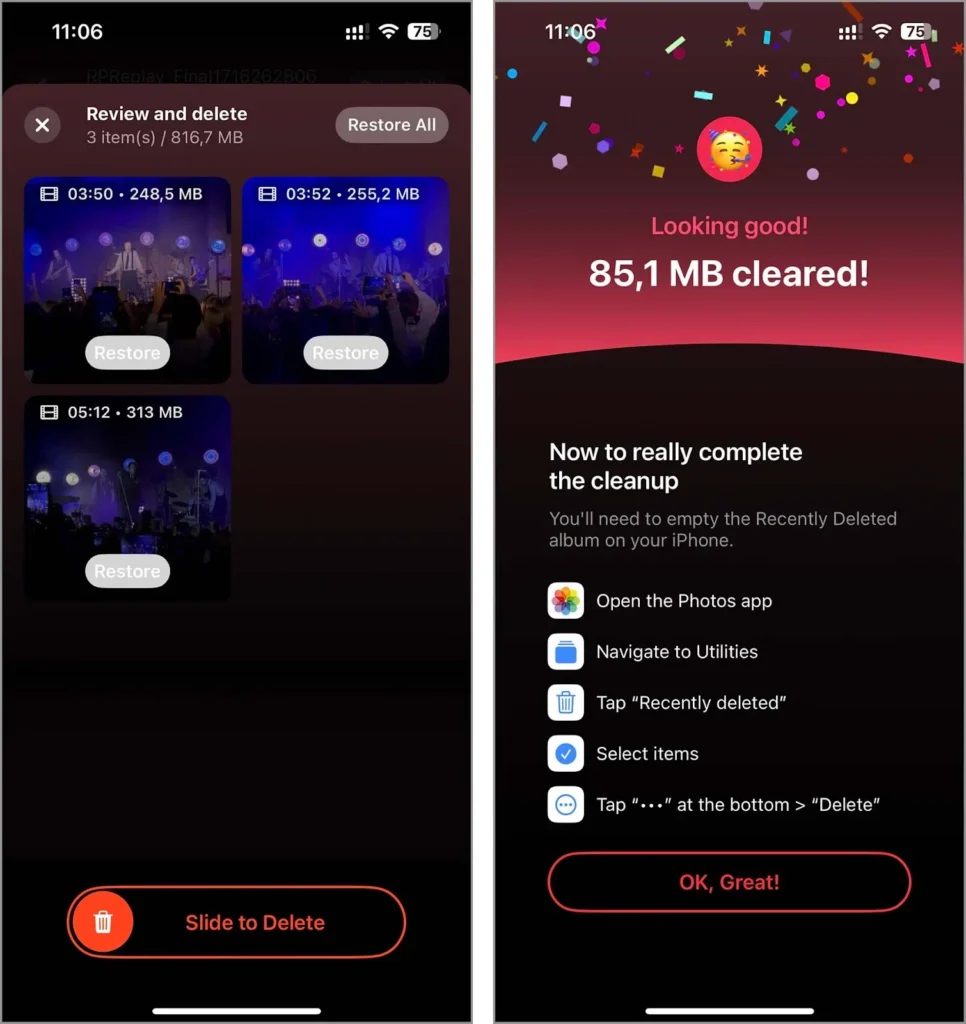
For the best results and to free up even more space on the iPhone, it’s a good idea to use all the features the app offers.
<iframe width="560" height="315" src="https://www.youtube.com/embed/PJZfJnOUmRE?si=3CMRIWO0OPjrZJbP" title="YouTube video player" frameborder="0" allow="accelerometer; autoplay; clipboard-write; encrypted-media; gyroscope; picture-in-picture; web-share" referrerpolicy="strict-origin-when-cross-origin" allowfullscreen></iframe>Another quick way to clear your Apple phone storage is to delete apps that you no longer use:
- Tap on the ‘Settings’ app on your iPhone.
- Select ‘General’ and then tap on ‘iPhone Storage.’
- You will see a list of all your apps and how much storage each uses.
- Tap on an app that you want to remove, then select ‘Delete App.’
- Confirm your choice to delete the app permanently to free up storage.
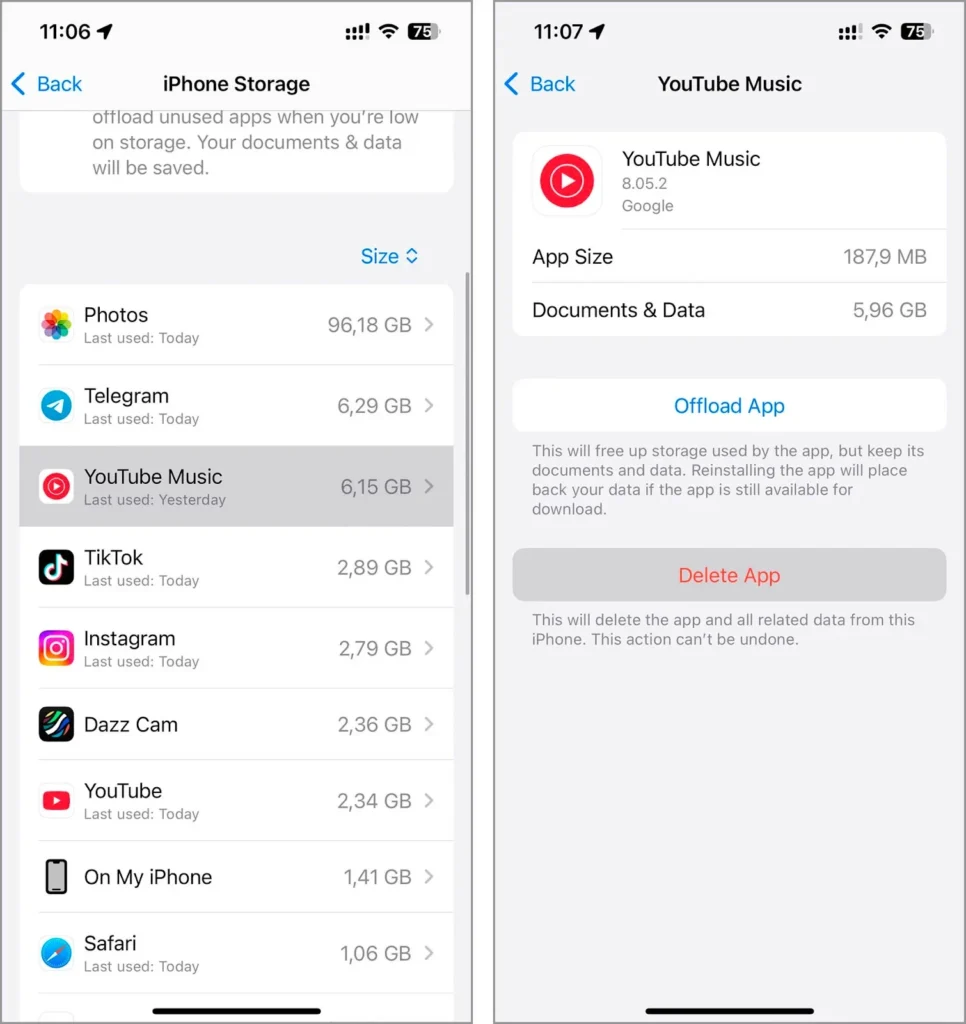
Fix 6: Reset All Settings of Your iPhone
This is the last method we’ll cover, and it’s a good one to try if nothing else has worked and the iPhone is still lagging. The Reset All Settings option puts all your settings back to their default state. That includes things like Wi-Fi passwords, network settings, keyboard dictionaries, privacy preferences, and location settings. The key thing to know? It won’t delete your files. Your apps, photos, and other items will all stay right where they are.
- Open the Settings app on your Apple phone.
- Scroll down and tap General.
- At the bottom of the screen, tap Transfer or Reset iPhone.
- Then tap Reset and choose Reset All Settings. Don’t worry, this won’t erase your apps or personal data, just the system settings.
- Enter your passcode or Apple ID password if asked.
- Once confirmed, your Apple phone will restart, and all system settings will be reset to their defaults.

Conclusion
It’s totally normal for your gadget to lag a bit right after an iOS update. That slowdown usually clears up once your phone finishes running all its background processes. But if things don’t go back to normal after a while, it’s time to take action.
Start with a simple restart (it’s often all you need). If that doesn’t help, check your storage and battery health since both can seriously affect performance.
Also, keep in mind that once you update to a new iOS version, Apple doesn’t recommend downgrading, and they won’t support any issues if you try. So before updating, it’s smart to check out user reviews and see what others are saying about their experience. That way, you’ll have a better idea of what to expect before you hit that “Update” button.


